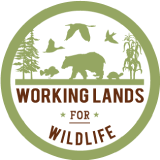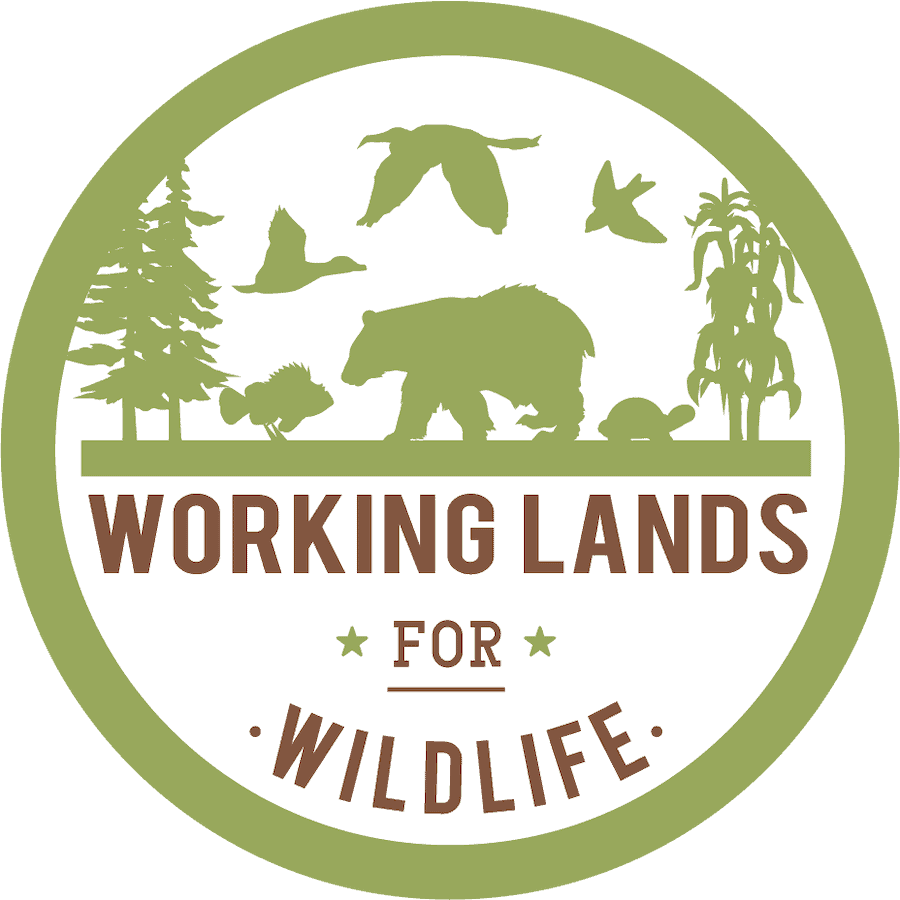-
 Connecting Fuels Treatments in the Salish Mountains and Whitefish Range
Connecting Fuels Treatments in the Salish Mountains and Whitefish Range
-
by
Rhishja Cota
—
published
Oct 27, 2022
—
filed under:
Wildland Fire,
Research
This landscape-scale fuels reduction project targets connecting 25 miles of cross boundary fuel reduction treatments within the rapidly expanding wildland urban interface (WUI) and communities at risk of catastrophic wildfire near the Salish Mountains west of Kalispell and north to the Whitefish Range.
Located in
Resources
/
…
/
Projects
/
Fire-Community & Infrastructure
-
 Nebraska Northwest Landscape Restoration
Nebraska Northwest Landscape Restoration
-
by
Rhishja Cota
—
published
Oct 27, 2022
—
filed under:
Wildland Fire,
Projects,
Research
USFS, NRCS, and partners have conducted prescribed burns or mechanically removed cedar on approximately 40,000 acres in the Sandhills grasslands.
Located in
Resources
/
…
/
Projects
/
Fire-Community & Infrastructure
-
 WildfireSAFE: Real-Time Data to Improve Wildfire Management
WildfireSAFE: Real-Time Data to Improve Wildfire Management
-
by
Rhishja Cota
—
published
Oct 27, 2022
—
filed under:
Wildland Fire,
Research
WildfireSAFE provides an intuitive platform to access fire weather, hazard and behavior information from the Wildland Fire Assessment System (WFAS) for specific incidents. It supports the greater interagency fire community in the planning, response, and recovery phases of wildfire management.
Located in
Resources
/
…
/
Projects
/
Innovation in Fire Tools, Thinking & Approaches
-
 Comparing Remote Sensing and Field-Based Approaches to Estimate Ladder Fuels and Predict Wildfire Burn Severity
Comparing Remote Sensing and Field-Based Approaches to Estimate Ladder Fuels and Predict Wildfire Burn Severity
-
by
Rhishja Cota
—
published
Nov 02, 2022
—
filed under:
Remote Sensing,
Research,
Fire Mapping,
Products,
Science and Research Products,
Wildland Fire,
Projects,
Ladder Fuels
A comparative study on remote sensing and field-based approaches to estimate ladder fuel density. Can densities from different approaches predict wildfire burn severity?
Located in
Resources
/
Research
/
Products
-
 Western Fire Chiefs Association (WFCA) Fire Map
Western Fire Chiefs Association (WFCA) Fire Map
-
by
Rhishja Cota
—
published
Nov 02, 2022
—
last modified
Nov 08, 2022 12:22 PM
—
filed under:
Wildland Fire,
Fire Mapping,
Remote Sensing,
Products,
Research
The WFCA Fire Map pulls data from the US Forest Service via National Interagency Fire Center IRWIN feed, and 911 Dispatch data via PulsePoint to track the location of the wildfire as they start and while they’re burning. The WFCA Fire Map is the first map of its kind to pull such data from 911 Dispatch in relevant areas.
Located in
Resources
/
Research
/
Products
-
 Overwintering behavior reduces mortality for a terrestrial turtle in forests managed with prescribed fire
Overwintering behavior reduces mortality for a terrestrial turtle in forests managed with prescribed fire
-
by
Rhishja Cota
—
published
Nov 08, 2022
—
filed under:
Turtle,
Wildlife,
Eastern Box Turtle,
Reptile,
Product,
Brumation,
Prescribed Burn,
Forests,
Wildland Fire,
Research,
Longleaf Pine
Using radiotelemetry, we studied overwintering behavior and interactions with fire in a forest-dwelling terrestrial turtle, the Eastern Box Turtle (Terrapene carolina carolina), over an eight-year period at two sites that use prescribed fire in forest management.
Located in
Resources
/
Research
/
Products
-
 Outcomes from Delivery of NRCS's WLFW-Bobwhite in Managed Pine Savannahs
Outcomes from Delivery of NRCS's WLFW-Bobwhite in Managed Pine Savannahs
-
by
Bridgett Costanzo
—
published
Jun 11, 2019
—
last modified
Apr 21, 2023 12:35 AM
—
filed under:
WLFW Outcomes: Funded Research,
WLFW,
Northern Bobwhite Quail,
Research,
Grasslands and Savannas,
Working Lands for Wildlife
In 2016, the Natural Resources Conservation Service’s Working Lands for Wildlife partnership began funding management activities designed to enhance, restore, and protect bobwhites habitat on private lands. Through the WLFW program, NRCS is able to assist landowners to voluntarily create and maintain bobwhite habitat in order to support the range-wide recovery of the species. In 2018, NRCS entered into an agreement with the University of Georgia to assess habitat outcomes and bobwhite population response to our conservation actions.
n collaboration with the University of Georgia, NRCS is now looking to monitor some of these managed lands to help tease out habitat features that promote excellent bobwhite habitat. If possible, additional information (e.g., other forestry management actions employed) may also be collected through interviews with landowners and/or conservation partners.
Located in
Information
/
Research
/
WLFW Outcomes: Funded Research
-
 Assessment of Native Grasses for Forage & Bobwhite Habitat
Assessment of Native Grasses for Forage & Bobwhite Habitat
-
by
Bridgett Costanzo
—
published
Jun 11, 2019
—
last modified
Apr 21, 2023 12:36 AM
—
filed under:
WLFW Outcomes: Funded Research,
WLFW,
Northern Bobwhite Quail,
Research,
Grasslands and Savannas,
Working Lands for Wildlife
The University of Tennessee Institute of Agriculture, through its Center for Native Grasslands Management will conduct a study to evaluate the effectiveness of a working lands conservation model for enhancing northern bobwhite and other grasslands wildlife populations. Specifically, we will evaluate native grass forage production within fescue-belt landscapes to determine how effective this strategy is for improved survival and productivity of northern bobwhite and abundance of associated grassland bird species. The study will be conducted in cooperation with partner agencies within the fescue belt.
Located in
Information
/
Research
/
WLFW Outcomes: Funded Research
-
 Economic and Production Performance of Native Grasses as Forage in the Fescue Belt
Economic and Production Performance of Native Grasses as Forage in the Fescue Belt
-
by
Bridgett Costanzo
—
published
Jun 11, 2019
—
last modified
Apr 21, 2023 12:37 AM
—
filed under:
WLFW Outcomes: Funded Research,
WLFW,
Northern Bobwhite Quail,
Research,
Grasslands and Savannas,
Working Lands for Wildlife
The primary purpose of developing this literature review and summary was to inform producers about the potential benefits from utilizing warm-season grasses in the Fescue Belt. Effectively, managing forages is not always straightforward for livestock producers. Summarizing the economic and production benefits from using warm-season grasses could help producers make more informed forage management decision and might encourage producers to consider adopting warm-season grasses. Furthermore, this literature review also gathered information about the potential benefits of using native grasslands as forage to the quail population in this region, which could likely result in an economic benefit to the producer from leasing farmland to hunters.
Located in
Information
/
Research
/
WLFW Outcomes: Funded Research
-
 American Black Duck Decision Support Tool
American Black Duck Decision Support Tool
-
by
Rhishja Cota
—
published
Nov 09, 2022
—
last modified
Jul 26, 2023 12:14 PM
—
filed under:
Additional Resources,
American Black Duck,
Decision Support Tools,
Climate Change,
American Black Duck Additional Resources,
Watersheds,
Black Duck,
Research,
Urbanization,
Peer-reviewed Science,
Waterfowl,
Migration,
Aquatics,
Products,
Birds,
Resources,
Salt marshes
The Atlantic Coast Joint Venture Black Duck Decision Support Tool (DST) helps to identify the exact number of acres to protect, restore or maintain at the small watershed scale. Through this tool, land managers can determine the best way to contribute to achieving black duck goals anywhere on the landscape.
Located in
Information Materials
/
Research
/
Peer-reviewed Science


